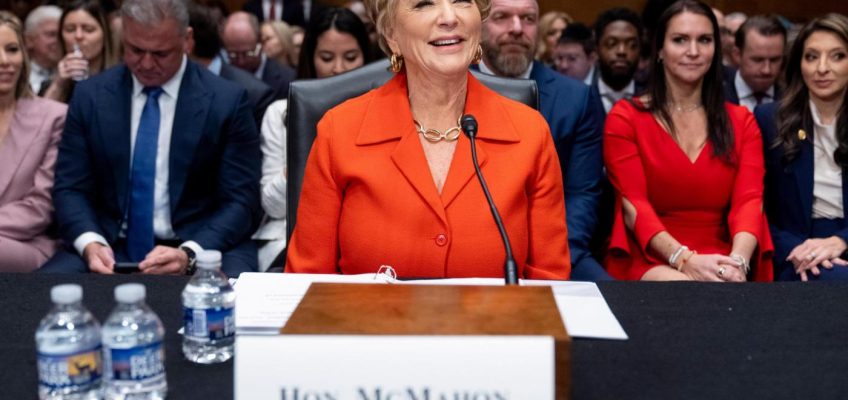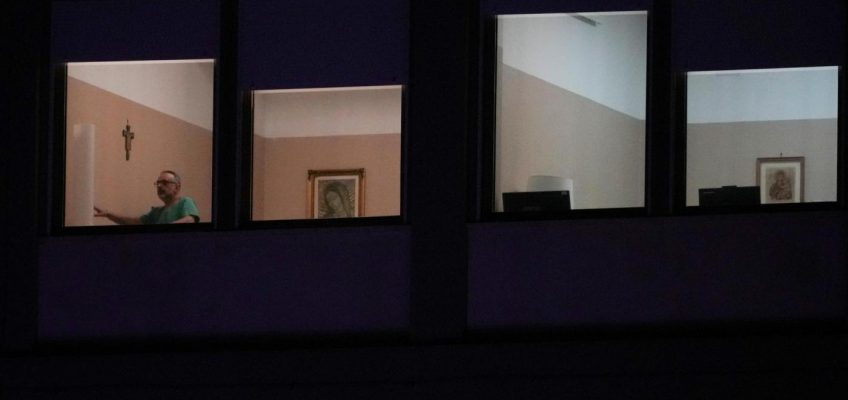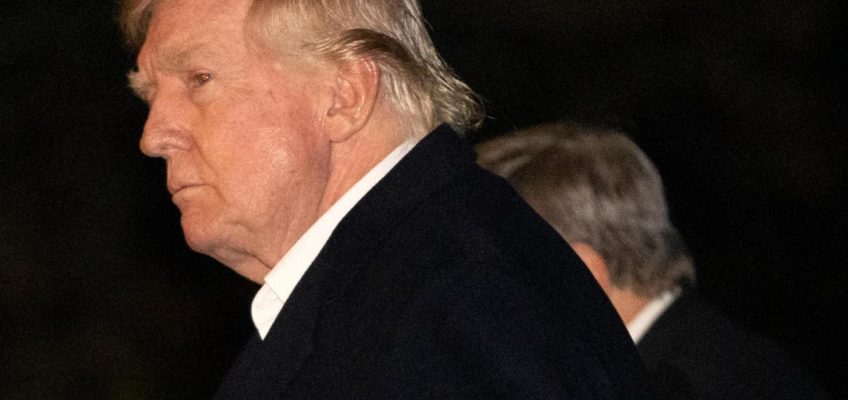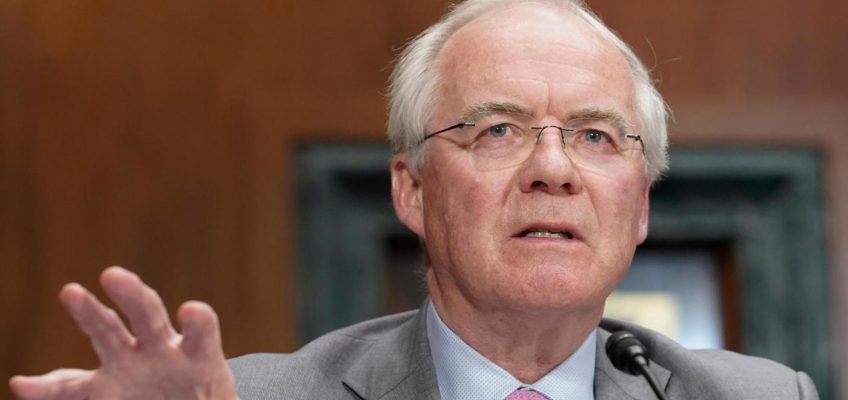WASHINGTON (AP) — The Senate is voting Monday on whether to confirm former wrestling executive Linda McMahon as the nation’s education chief, a role that would place her atop a department that President Donald Trump has vilified and vowed to dismantle.
McMahon would face the competing tasks of winding down the Education Department while also escalating efforts to achieve Trump’s agenda. Already the Republican president has signed sweeping orders to rid America’s schools of diversity programs and accommodations for transgender students while also calling for expanded school choice programs.
At the same time, Trump has promised to shut down the department and said he wants McMahon “to put herself out of a job.”
Related Articles
How to watch the first joint address to Congress of Trump’s second term
Trump’s next first speech to Congress is bound to have little resemblance to his last first one
Lewis M. Rambo: A personal reflection on the dismantling of DEI initiatives
James Stavridis: Lacking coherent rationale, sudden firings of senior officers will reduce security
Other voices: The certainty of arrest and return is a huge changing point
A billionaire and former CEO of World Wrestling Entertainment, McMahon, 76, is an unconventional pick for the role. She spent a year on Connecticut’s state board of education and is a longtime trustee at Sacred Heart University but otherwise has little traditional education leadership.
McMahon’s supporters see her as a skilled executive who will reform a department that Republicans say has failed to improve American education. Opponents say she’s unqualified and fear her budget cuts will be felt by students nationwide.
At her confirmation hearing, McMahon distanced herself from Trump’s blistering rhetoric. She said the goal is to make the Education Department “operate more efficiently,” not to defund programs.
She acknowledged that only Congress has the power to close the department, and she pledged to preserve Title I money for low-income schools, Pell grants for low-income college students, and the Public Service Loan Forgiveness program. Yet she suggested some operations could move to other departments, saying Health and Human Services might be better suited to enforce disability rights laws.
Weeks before McMahon’s confirmation hearing, the White House was considering an executive order that would direct the education secretary to cut the agency as much as legally possible while asking Congress to shut it down completely. Some of McMahon’s allies pressed the White House to hold the order until after her confirmation to avoid potential backlash.
Created by Congress in 1979, the Education Department’s primary role is to disburse money to the nation’s schools and colleges. It sends billions of dollars a year to K-12 school and oversees a $1.6 trillion federal student loan portfolio.
Trump argues the department has been overtaken by liberals who press their ideology on America’s schools. During his campaign, he vowed to close it and grant its authority to states.
Schools and states already wield significantly greater authority over education than the federal government, which is barred from influencing curriculum. Federal money makes up roughly 14% of public school budgets.
Already, the Trump administration has started overhauling much of the department’s work.
Trump adviser Elon Musk’s Department of Government Efficiency has cut dozens of contracts it dismissed as “woke” and wasteful. It gutted the Institute of Education Sciences, which gathers data on the nation’s academic progress, and the administration has fired or suspended scores of employees.
Some of the cuts have halted work that’s ordered under federal law. At her hearing, McMahon said the agency will spend money that’s directed by Congress, and she played down DOGE’s cuts as merely an audit.
McMahon is a longtime Trump ally who left WWE in 2009 to launch a political career, running unsuccessfully twice for the U.S. Senate. She has given millions of dollars to Trump’s campaigns and served as leader of the Small Business Administration during his first term.
The Associated Press’ education coverage receives financial support from multiple private foundations. The AP is solely responsible for all content. Find the AP’s standards for working with philanthropies, a list of supporters and funded coverage areas at AP.org.




